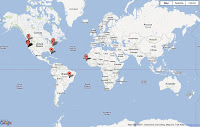 1
1
 2
2
 3
3
 4
4
 5
5
 6
6
 7
7
 8
8
 9
9
 10
10
 11
11
 12
12
 13
13
 14
14
See full album at PicasaWeb
For further commentaries on understanding, check out these blog entries:
blog of mr. spedding's 5th grade language arts/social studies classes, the international school of monterey
 1
1
 2
2
 3
3
 4
4
 5
5
 6
6
 7
7
 8
8
 9
9
 10
10
 11
11
 12
12
 13
13
 14
14
For further commentaries on understanding, check out these blog entries:

 1
1
 2
2
 3
3
 4
4
 5
5
 6
6
 7
7
 8
8
 9
9
 10
10
 11
11
The plot is how the author arranges events to develop his basic idea. It is the sequence of events in a story or play. The plot is a planned, logical series of events having a beginning, middle, and end. The short story usually has one plot so it can be read in one sitting. There are five essential parts of plot:
a) Introduction - The beginning of the story where the characters and the setting is revealed.
b) Rising Action - This is where the events in the story become complicated and the conflict in the story is revealed (events between the introduction and climax).
c) Climax - This is the highest point of interest and the turning point of the story. The reader wonders what will happen next; will the conflict be resolved or not?
d) Falling action - The events and complications begin to resolve themselves. The reader knows what has happened next and if the conflict was resolved or not (events between climax and denouement).
e) Denouement - This is the final outcome or untangling of events in the story.



 1
1
 2
2
 3
3
 4
4
 5
5
 6
6
 7
7
 8
8
 9
9
 10
10 1
1
 2
2
 3
3
 4
4
 5
5

 6
6
 7
7
 8
8
 9
9
 10
10
 11
11
 12
12
 13
13
 14
14
 15
15
 16
16
 17
17